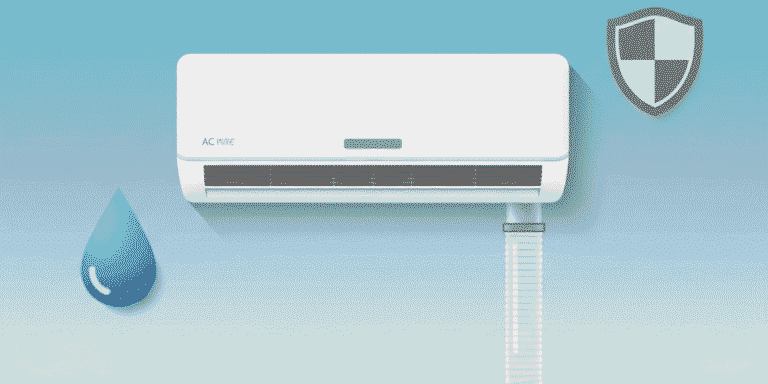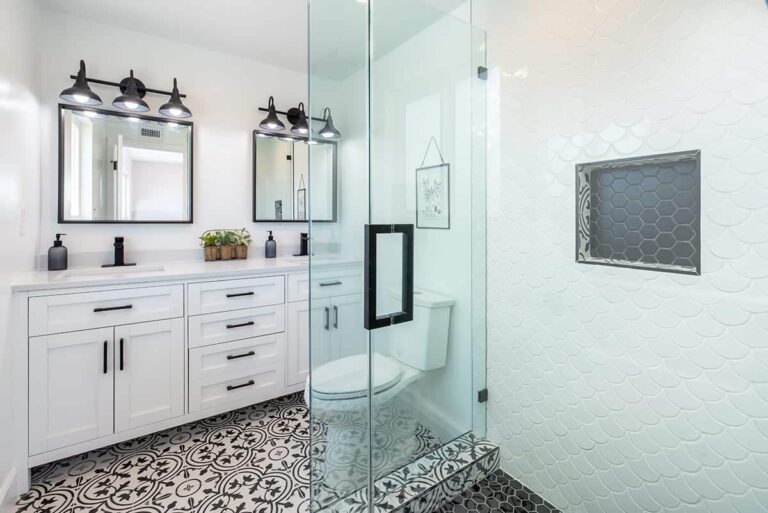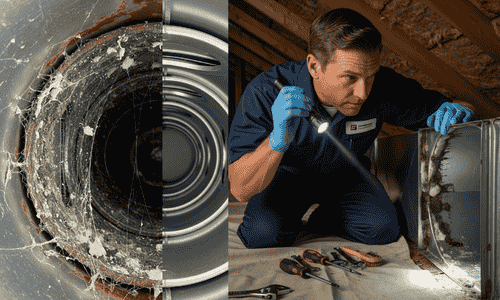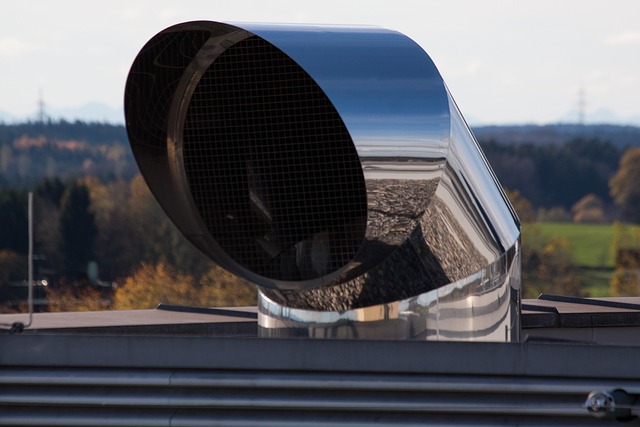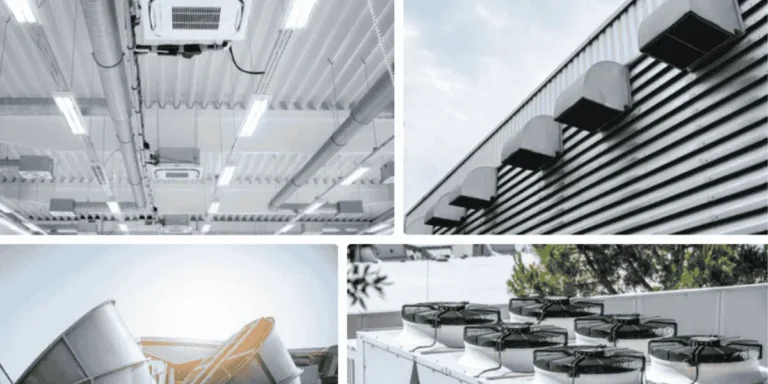Key Takeaways
- Return air vents draw indoor air back to the HVAC system for filtering and reconditioning, creating steady airflow and balanced pressure. Leave these vents open and clear to maintain balanced temperatures and reliable operation.
- Good circulation keeps hot or cold spots from forming and allows every room to be suffused with heat or air conditioning. Make sure that furniture, curtains, or rugs aren’t obstructing return grilles so that air can flow freely.
- Balanced pressure lessens wear on blowers and ductwork and decreases energy loss. Check for whistling doors or drafts as indication of pressure imbalance and install or resize return vents as necessary.
- Filters for your indoor air quality, and clean return paths to keep dust and allergens from entering the coils and blowers. Change filters on time and vacuum vent grilles to maintain hygienic airflow.
- Return vents that are correctly sized and properly located can make the entire system more efficient and extend the life of your equipment. Utilize the manufacturers air flow requirements and locate returns in as central a location as possible, away from kitchens and bathrooms, to maximize efficiency.
- Routine care avoids concealed problems that drive up expenses and decrease coziness. Plan regular HVAC tuneups, duct leak fixes on return ducts, and perhaps smart controls or sensors to get real-time air flow and air quality data.
Return air vent functionality is how HVAC systems suck indoor air back to the air handler to be filtered, helping equalize pressure and maintain steady airflow.
Return vents in homes and offices keep room pressure neutral, decrease hot/cold spots and extend filter life. Proper siting, clear air paths, and clean grilles count.
Noise and efficiency are shaped by size and duct design. To inform improvements or inspections, the following sections discuss functions, typical problems, and easy remedies.
What is the Return Air Vent Function?
Return air vents, such as the central return air vent, draw indoor air towards the HVAC unit for filtering, reconditioning, and distribution. They don’t deliver air; instead, they gather it, assist in clearing stale air, and maintain proper airflow throughout rooms. By returning air to the system, they equalize air pressure, shield elements, and promote stable comfort.
1. Air Circulation
Return vents enable a loop: supply vents push conditioned air into a room, and return vents draw used air out. That flow keeps air moving past people and furniture and walls, instead of resting.
Even circulation reduces hot and cold spots. It assists heat to a distant bedroom in winter and cooling to a sun-baked office in summer.
When you have return paths properly installed, each space receives an equal distribution of heating or cooling. One return per room is a minimum; two or three are preferable in bigger rooms or open plans.
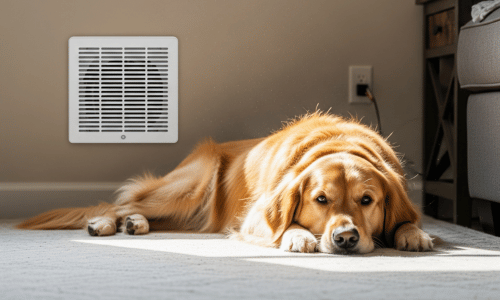
Uninterrupted air flow allows the blower to work less for the same impact, which promotes efficient HVAC function.
2. Pressure Balance
Return vents keep pressure from building by providing air a path to return to the unit. Closed doors with no return or undercut trap pressure in a room.
Blocked or missing returns can slam doors, whistle through cracks or pull outdoor air in. Those drafts are uncomfortable and scream inefficiency.
Balanced pressure reduces stress on the blower and duct seams, decreasing the potential for leaks. It helps air handlers maintain their design flow rate.
Good pressure balance minimizes energy loss by limiting unplanned air routes and preventing conditioned air from escaping the envelope.
3. System Efficiency
When return airflow is unobstructed, the system achieves its desired flow at lower power. That translates to less compressor cycles, shorter run times.
Lower resistance, especially in return paths, tends to manifest itself in lower bills every month. Little things, such as unblocking a grille, can assist.
An intelligently designed return pattern minimizes wear on motors, belts and coils. Less temperature swings equates to less starts and stops.
High efficiency generally has the additional bonus of extending equipment life, postponing expensive replacement.
4. Air Filtration
Return vents pull air through filters that capture dust, pollen, pet dander and lint. This step safeguards both humans and the device.
Change filters on schedule, usually every 1–3 months, or more frequently in dusty environments or households with pets. A clogged filter increases resistance and damages air quality.
Return air vents – Clean return air shields coils and blowers from grime that can cut heat exchange and airflow. It also minimizes that musty smell.
Effective filtration lowers allergen load and supports healthier spaces.
5. Temperature Control
It is important because good return airflow helps keep room temps steady by recirculating air fast. Stale pockets disappear and set points stay in place.
Precise return flow allows thermostats to detect actual room temperatures. That results in better control and less swings.
Return vents restrict hot/cold spots in upstairs rooms, corners and around big windows. They draw warm, moist air for dehumidification in cooling mode.
Balanced returns help both heating and cooling cycles year‑round. Don’t cover grilles with furniture and returns have no dampers, supply vents do.
Bad returns drive up bills, cause moisture problems such as mold, and degrade efficiency. Returns can save you money by maintaining the efficiency of the system.
Return Vents Versus Supply Vents
Supply vents, known as supply registers, blow conditioned air into rooms. Return vents suck room air back to the HVAC unit. Both are components of a single loop that circulates air, cleans it and maintains a temperature. Identifying which is which aids you in placing furniture, setting dampers and catching problems early.
- Supply vents: smaller grilles, often have directional louvers, noticeable airflow out.
- Return vents: larger grilles, no adjustable louvers, steady pull of air in.
- Supply vents: found high on walls, floors, or ceilings near exterior walls.
- Return vents: placed on walls or ceilings in central spots or hallways.
- Supply function: deliver heated or cooled air from the air handler.
- Return function: draw room air back for filtering and reconditioning.
- Sound cues: supply vents may hiss. Returns are quieter but constant.
- Filter location: near return paths. Returns shield filters and coils from dust.
A normal house has both kinds of vents. At least one return air vent per room; two or three help balance larger or closed-off rooms. If a home has just one central return air vent, air flow can still function if interior doors remain open to allow air to flow back. If doors have to remain closed, utilize undercut doors or transfer grilles to prevent pressure imbalances and hot/cold spots.
Right identification counts. Blocking a return air vent with a sofa or rug starves the system of air, drops efficiency, and can freeze a coil in cooling mode. Because closing too many supply registers makes static pressure higher, straining the blower—and leaking the duct. Keep a simple mental map: supplies blow out, returns draw in. Record them on a floor plan so you don’t obscure them when you rearrange a room.
Efficiency relates to temperature difference. The delta T, or the difference of supply air and return air, at the evaporator should be approximately 16–22°F (9–12°C). A Delta T under 16°F (approximately 9°C) indicates the system isn’t extracting sufficient heat from the air. Reasons can be a soiled filter, plugged coil, low refrigerant, or weak airflow from blocked return air ducts. You can spot-check with a basic thermometer: measure at a supply grille and a nearby return, then compare.
Maintain clean vents. Vacuum grilles and wipe them down so dust doesn’t choke airflow. Inspect your air filter every 1-3 months, or according to the manufacturer’s instructions. Find out where your supply and return air vents are, how air moves room to room, and which registers can be adjusted. Small increments maintain comfort and control energy efficiency.
Consequences of Poor Design
Return air vents, such as the main air return vent, suck air back to the HVAC unit, ensuring proper airflow and balance between supply and return. When design is poor—wrong size, layout, or blocked paths—the entire system is stressed, comfort declines, and costs increase.
Uneven temperatures and discomfort
Not enough returns or vents located distant from the primary living areas create hot and cold pockets. Rooms at the end of long hallways or upper floors could be several degrees off from the set point. Closed doors with no transfer grilles trap supply air, creating pressure in rooms and starving return path.
That imbalance reduces airflow to the coil, so supply registers blow weak or noisy. Ducts in unconditioned space compound the divide; heat gain or loss in those runs means the air that finally returns is not at the anticipated state, so rooms feel stuffy or drafty.
In tight-envelope homes, bad return paths can even suck air through gaps in walls and ceilings, bringing in dust and outdoor smells.
Higher energy use and bills
When return air is low, the blower labors. Static pressure increases, fan power increases, and energy use surges. Systems short cycle or run longer than needed, both wasteful.
With ducts in attics or crawl spaces, leakage on the return side pulls in hot or cold or humid air. The unit must then heat, cool or dehumidify additional load it never required, which can add kilowatt hours per day.
Badly sealed returns can increase pressure differentials between the indoors and outdoors, promoting unrestrained infiltration and causing additional energy loss.
Moisture, mold, and poor indoor air quality
Starved returns allows coils to run colder and could cause icing then melting and adding moisture back into the airstream. Low airflow implies weak dehumidification, so indoor relative humidity creeps over 60%.
That humidity beckons mold on supply grilles, around windows and inside ducts. Pressure imbalances can suck moist air through wall cavities resulting in condensation and secret blooms.
Worst case, backdrafting of combustion appliances, where the return side depressurizes the house, pulling flue gasses inside. Trapped pollutants — cook fumes, cleaning agents, fine dust — accumulate when air exchanges falter.
More repairs and shorter equipment life
High static pressure puts stress on blowers, bearings and motors. Coils that ice and thaw are at risk of leaks and corrosion. Compressors endure extended run times and elevated head pressures, reducing longevity.
Filters clog quicker from bypass dust sucked through leaks. Service calls escalate and major parts break down prematurely.
As it turns out, over time, return design costs more in repairs than a correct redesign would.
Optimizing System Airflow
Optimizing airflow starts with the whole system: building layout, HVAC capacity, duct paths, and how people use the space. Map supply and return runs, record duct size and shape, and search for tight bends, long runs, and bottlenecks.
Ensure ducts are insulated to reduce heat loss in winter and heat gain in summer. Seal joints and boots; unsealed ducts can squander 30% airflow. Verify that return air vents are unobstructed, as they deliver air to the air handler and typically lack dampers.
Measure airflow in CFM to match vent sizing and quantity to equipment specifications.
Checklist for evaluation:
- Count and locate all supply and return vents.
- Verify no rugs, drapes, or furniture block returns.
- Check filters, coils, and grilles – clean or replace if dirty.
- Inspect ductwork for kinks, crushed sections, loose tape, or gaps.
- Confirm duct insulation levels along unconditioned paths.
- Review zoning and damper settings for balanced flow.
- Compare total return CFM capacity with equipment airflow needs.
Proper Sizing
Pair each return vent with the system’s CFM and room load. Guess right, use manufacturer air handler curves and proven HVAC standards to size grilles and ducts. Undersized returns choke airflow, increase static pressure, and force the blower to strain.
Giant grilles and tiny ducts don’t solve the restriction – size the entire path. Adhere to published velocity targets to manage noise and pressure! Verify grille free area, not simply the nominal size.
Remember, return vents don’t usually have dampers, so sizing accuracy counts even more.
Standard return grille sizes by home area (guidance only):
- Up to 90 m²: 250 × 300 mm, 300 × 300 mm
- 90–180 m²: 300 × 400 mm, 350 × 450 mm
- 180–280 m²: 350 × 500 mm, 400 × 500 mm
- 280–420 m²: 400 × 600 mm, 450 × 600 mm
Strategic Placement
Locate return vents in central locations to suck mixed room air and restrict dead pockets. Halls, open living spaces, and near stair landings fit nicely in most floor plans.
Steer clear of kitchens and baths to prevent grease, odor, and moisture from being sucked into the return. This benefits indoor air quality and reduces mold potential in ducts.
In colder climates, employ baseboard returns to sweep cool air and allow warm air to rise. In hot climates, high-wall returns trap ascending warmth and relieve cooling demand.
For multi-story homes, introduce returns on each floor to decrease door undercut reliance, equalize pressure, and stabilize room-to-room temperature variations.
Vent Quantity
Big houses, many bedrooms, or closed-door tendencies contribute to the desire for additional returns. Not enough returns cause pressure swings, whistling doors, and hot/cold spots.
Calculate based on square footage, number of rooms, door utilization, and desired system CFM. Verify with pressure and airflow measurements.
Factors that drive return quantity:
- Total floor area and ceiling height
- Room count and door placement
- Duct path length and number of turns
- Equipment airflow (CFM) and zoning layout
- Leakage rate and sealing quality
Common Performance Issues
Return air vents convey room air to the HVAC system, and when they do, proper airflow decreases, comfort oscillates, and energy efficiency declines.
Blocked or dirty return vents
Dust, pet hair, and debris fill the grille and the cavity behind it. Low airflow manifests as feeble vent pulls, stale rooms, mildew smells when on, and spiking utility bills.
Dirty return paths recirculate allergy and asthma-causing particles. Filthy ductwork can contribute as much as 30% to energy bills and aggravate symptoms for sensitive individuals.
Test each return with a tissue; if it hardly sucks it in, airflow is weak. Clean grilles, push furniture or rugs off the intake, and get duct cleaning every three to five years to reduce buildup and maintain healthy indoor air quality.
Leaky or disconnected return ductwork
Gaps, loose joints or a fully disconnected run allow it to pull air from attics, crawl spaces, or garages instead of the rooms. This contributes dust and spores, stokes mustiness and dissipates energy.
Long duct runs and excessive sharp turns increase resistance and drop pressure, amplifying the impact of leaks. Unbalanced supply and return ducts then starve some rooms while others get too much flow.
Seal seams with mastic, failing tape gets replaced, and where ducts go through unconditioned zones, add insulation to prevent winter heat loss and summer heat gain.
Clogged air filters in return paths
Filters that sit in return grilles or at the air handler can load up quickly. When clogged, they restrict airflow, overwork the blower and can even ice the coil in cooling mode.
Anticipate less powerful vent output, extended run times and louder blower noise. Check filter size and rating. A high-MERV filter does a lot to help air quality but requires more frequent changing.
In pet or high dust homes, monthly checks are a no brainer. Otherwise, shoot for every 2–3 months, or sooner if you notice the presence of gray matting.
Loose or damaged vent covers
Bent fins, broken frames or rattling screws disrupt air return and contribute to noise. If a cover is the wrong size, it can whistle or choke flow.
Poor placement makes it worse: returns tucked behind doors, blocked by large furniture, or set too close to a strong supply create short-cycling air paths and leave remote rooms starved.
Pair placement with right-sizing: undersized ducts restrict flow; oversized ducts waste capacity. Repair with tight-fitting covers, straightened fins, and, where necessary, duct design modifications to minimize stiff turns and extended runs that drain pressure.
The Vent’s Unseen Influence
Return air vents play a crucial role in maintaining proper airflow, energy efficiency, and indoor air quality within your home. Unseen cracks can lead to poor airflow, causing rooms to feel stale and utility bills to rise. When properly maintained, these vents support a healthier environment and stable temperatures, forming the foundation of an efficient HVAC system.
Building Health
Proper return air pulls humid air back to the air handler, which reduces indoor moisture and prevents mold or mildew. Balanced return paths minimize damp corners in closets and behind doors where stale air likes to linger.
Good return flow aids in stripping out fine dust, dander and other airborne pollutants as air circulates through filters. Filters do the trapping, but returns transport the amount of air that hits them — in cubic feet per minute (CFM).
Even air flow slices condensation on cold wall and ceiling surfaces. That keeps paint from blistering, drywall from warping, and rot from lurking. Look for fogged windows or musty odors as a warning that your return is not good.
Good return systems help breathe, particularly for those with asthma or allergies. Keep vents clear of rugs and furniture, as blocked returns can trap damp air and disseminate spores in damp rooms.
Home Acoustics
Properly engineered returns reduce buzz from air movement and equipment by distributing intake over larger grilles and ducts. Bigger holes require fewer velocities for identical CFM, which decreases hiss.
Badly installed or too small returns can whistle, chatter or rattle. Sharp duct turns, loose grilles, or long undersized runs compound the problem. Furniture against a return grille can buzz and damper wood risk with moisture.
With insulated ductwork, lined returns and robust, well-fitting covers you can reduce sound transfer. A deep, opposed-blade grille can help calm turbulence at the face.
Put returns away from bedrooms or quiet spaces when possible. Central wall or ceiling locations toward the center of the home tend to balance sound and airflow and short runs back to the air handler reduce vibration paths.
Smart Systems
These days, smart thermostats and zone controls require precise return air measurements to maintain steady set points and minimize run times. The return is the system knows average home conditions.
Some intelligent configurations detect airflow anomalies and may notify you of clogged filters or obstructed return grilles. Rising fan speeds accompanied by falling CFM is the usual indicator.
Including sensors at return vents allows you to perform real-time checks of temperature, humidity, and even VOCs. Data helps optimize fan speeds, filter replacement cycles, and schedules.
Smart vent covers and grilles can assist automation, but return air takes back don’t have dampers like supply registers. Leave them open, sized right, and unblocked – when returns don’t work, the entire HVAC system gets beat up and bills go up.
Design vent layout and book expert servicing for maximum performance.
Conclusion
To put it to bed, return vents DO WORK. They suck air back, keep pressure in balance, and assist the system to operate smooth. Open routes, properly sized vents and clean filters earn results. Rooms seem even. Energy consumption plummets. Gear is more durable.
Cut the guess work. Test airflow with a smoke pen. Note room temps. Filter dates track Seal duct leaks with mastic. Add jumper ducts in closed spaces. Install low-resistance grilles. Easy things pile up.
Notice some signs that crop up frequently. Annoying whine Hot and cold patches. Dust accumulation. Short cycles. Every tip signals air flow loss — not just ancient equipment.
Want to correct fundamentals quickly. Download our airflow check list and do a quick room-by-room test today.
Frequently Asked Questions
What does a return air vent do in an HVAC system?
The return air vent draws indoor air back to the air handler for filtering and conditioning, enhancing comfort by equalizing ventilation and air pressure.
How do return vents differ from supply vents?
Supply vents blow air into rooms, while return air vents effectively suck room air back to the HVAC system. Both must be balanced to maintain proper airflow, pressure, and comfort.
What happens if return vents are blocked or undersized?
You lose proper airflow, leading to hot or cold spots and increased energy consumption, while a functioning return air system can help maintain indoor air quality and reduce equipment stress.
How can I optimize airflow with return vents?
To ensure proper airflow in your HVAC system, maintain unblocked return air vents, clean filters, and ensure adequate return capacity by sealing duct leaks.
What are common performance issues linked to return vents?
Troubles such as noise, weak airflow, dust buildup, pressure imbalances, and temperature swings. More times than not, it’s blocked grilles, leaky ducts, dirty filters or poor sizing.
Should every room have a return vent?
You want a dependable return path from each room, which may include a dedicated return vent, transfer grille, or jump duct to satisfy proper airflow requirements.
How do return vents affect indoor air quality?
They supply air to the filter, and proper airflow through return air vents enhances filtration and circulation. Badly situated or leaky return air ductwork can suck dusty or polluted air from attics, basements, or garages.

